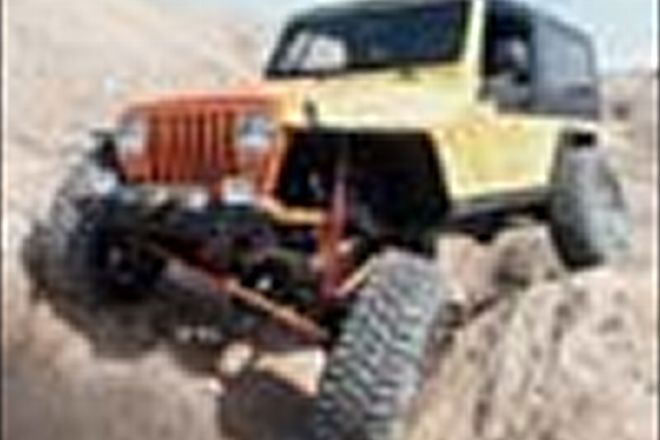
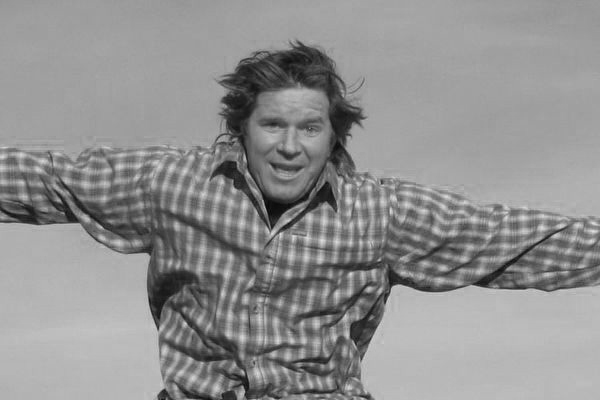 Fred Williams
Brand Manager, Petersen’s 4Wheel & Off Road
Photographers:
Poly PerformanceFox Racing ShoxSway-A-Way
Fred Williams
Brand Manager, Petersen’s 4Wheel & Off Road
Photographers:
Poly PerformanceFox Racing ShoxSway-A-Way
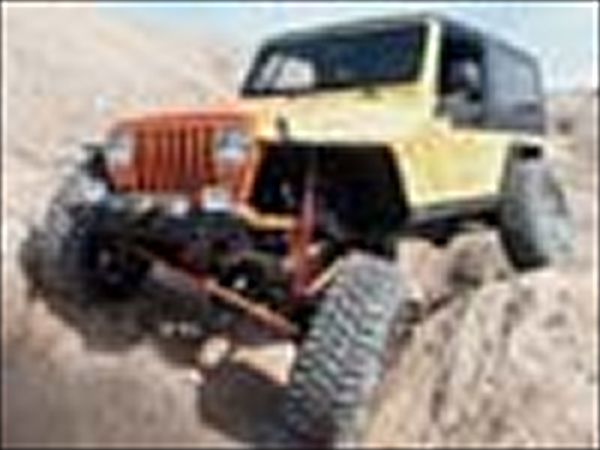
You want coil-over shocks. You don't know why, you don't know how they work, and you don't know why they might or might not be better, but you've seen them in the magazines, on race trucks, under rockbuggies, and on the Web, so you think you want them. Well, let's figure out if they are more than just cool-looking.
A coilover shock is basically a shock absorber with a coil spring or multiple coil springs wrapped around the shock so that it not only supports the weight of the vehicle, but also dampens the suspension to help control the spring. Seems pretty simple, eh?
Well it can be, but the major benefit of a coilover shock is that it can be adjusted and dialed in to achieve a far superior working suspension over any given terrain, but this also requires that you take the time and have the knowledge to dial in the coilover to get the best performance out of it. Dialing-in most coilovers involves adjusting both the coil-spring rates and the internal valving of the shocks. Oftentimes the company you purchase your coilovers from can help with this setup, and in the future we will give you a more technical breakdown of how to do this. But for now let's hit some coilover basics.
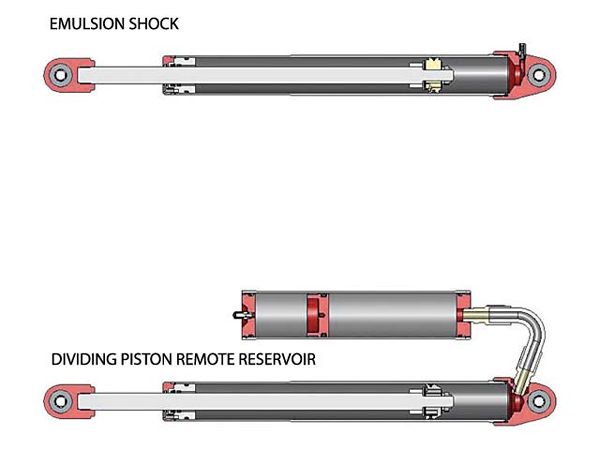
A coilover shock is fundamentally a cylinder (the shock body) filled with oil and an inner shaft with a piston that moves up and down within the body. The piston has small holes and very thin washers or shims designed to allow the oil to flow through it, but at the same time slow or control the speed and volume at which it moves. These shims can be changed to adjust the rate that the oil flows in each direction, and this gives the shock tunability on both the compression and rebound stroke. In addition to the shock oil, most of these rebuildable shocks are nitrogen charged. The nitrogen applies pressure to the oil to help force it through the piston, and also prevents the vacuum formed by the movement of oil, also known as cavitation. There are also two major styles of coilover: an emulsion shock, where the nitrogen charge is in the same area as the oil; and a dividing piston shock, where the nitrogen is separated from the oil by a floating piston. The floating piston can be found either in the shock body (internal floating piston) or in a remote reservoir. An emulsion shock is adequate for most four-wheelers looking for a slow speed or rockcrawling shock, whereas the reservoir and IFP shocks are better for high speed since the nitrogen and oil are less likely to mix and foam under extreme use.
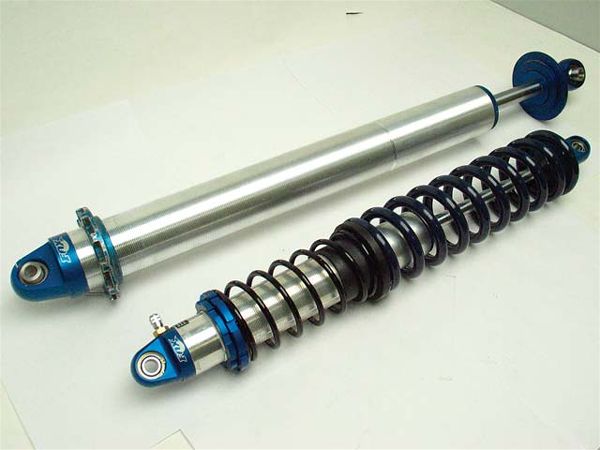
Most coilovers are available in 2-, 21/2-, or 3-inch-diameter shock bodies and various travel amounts from 6 to 18 inches. The average American would instantly assume that he needs a 3-inch shock with 18 inches of travel, but that is not always the case. In fact, most of us only need a 2-inch shock with 10 to 16 inches of travel. The larger shock does allow for greater heat displacement due to the increased oil capacity, but most 4x4s are not put through the abuse where they would need that. If you are in a lightweight rockcrawler, basic trail rig, or street truck, then a 2-inch is fine or at the most a 2 1/2. A fullsize desert prerunner or race buggy heading for 800 miles of hard desert roads could step up to a 21/2-inch. A 3-inch is mostly needed for trophy trucks. Also look at the coils available to determine if the spring rates you need are available in the shock size you want. The smaller shocks and coils are also cheaper and have more available spring rates.
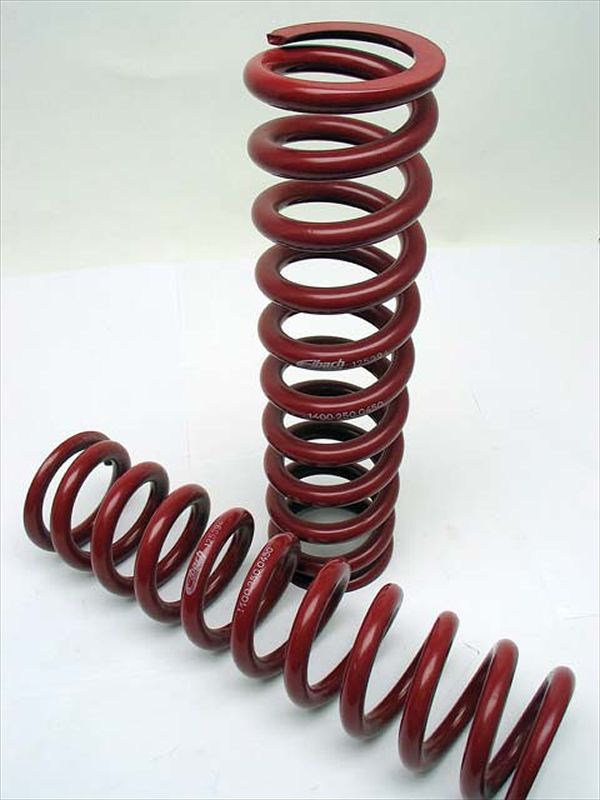
A coilover shock has the outside of the body threaded like a giant bolt with large adjuster nuts that hold the coil in place. These adjusters also allow you to preload the coils if need be, and adjust the ride height of the vehicle. The coil companies and dealers will help you determine the spring rate you need, and remember that the coil diameter is a half inch larger than the shock it is going on, such that a 3-inch coil is for a 21/2-inch shock. Another general rule to start with is that the overall length of coils needs to be twice the travel of the shock, such that a 14-inch-travel shock needs 28 inches of extended coil spring. The number of coil manufacturers is very small with most folks pointing to either Hyper-Coil or Eibach as the guys to go to.
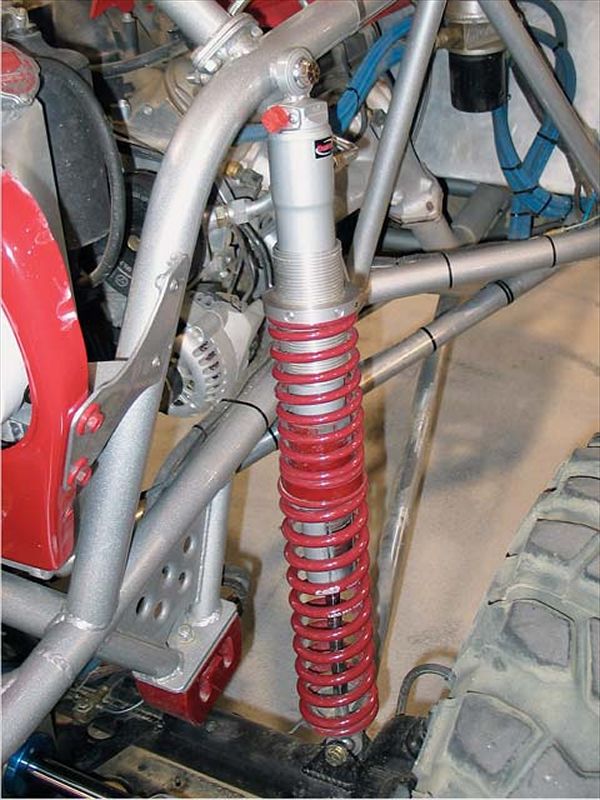
The list of coilover manufacturers is also pretty short. In the world of off-road racing there are just four: King, Fox, Sway-A-Way, and Bilstein. If there is a coilover on a racetruck out there other than these four, it is either custom-built or from a company no longer around. Recently a few other shops have showed up to address the demand for performance coilovers. Walker Evans Racing has taken its experience in both desert and snowmobile shock tuning and has come to market with its own version. Rancho is working at an entry-level coilover that will not be rebuildable, but will have adjustments similar to its RS 9000 shocks. Since we haven't tested every product, we posed the question of which is best to some of the different major retailers and the answer seems to most likely be determined by; (A) Which can you afford? (B) Who has the size you want? (C) What color shock do you want on your rig? And (D) Can you buy your shocks from a shop or dealer you like working with, since you will most likely be returning to them with questions till you have them dialed in? The fact is that the basic technology is near identical between these front-runners, and it comes down to the setup, tuning, and valving of each to really get the most from your shocks.
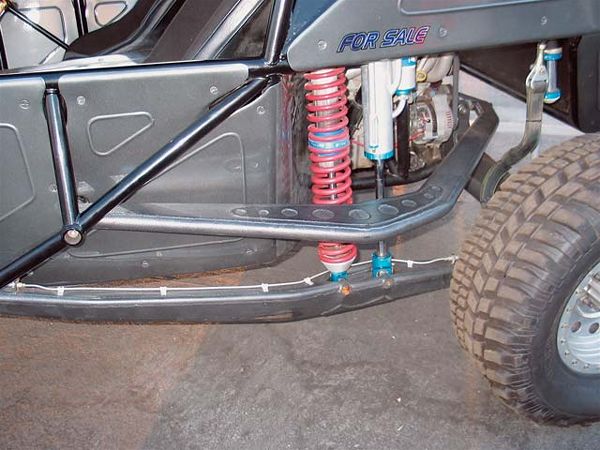
A very important aspect of a coilover suspension is controlling the movement of your axle. The best way to control the movement of an axle is with a linked suspension. This is a complete science in itself, and though not as simple as a leaf-sprung suspension, it can be designed to better transmit the power from the wheels to the vehicle. Plus then the job of supporting the weight and controlling the movement of the axle is separated from the job of locating the axle. Many folks will argue that a coilover suspension is lighter than a leaf-sprung suspension, but that is not always true. If the coils are mounted directly to the axle then the links can be made very light from some tubing, but if the coils are attached to the lower link arms like in many race or desert buggies and trucks, then they must be very beefy and the weight can increase.
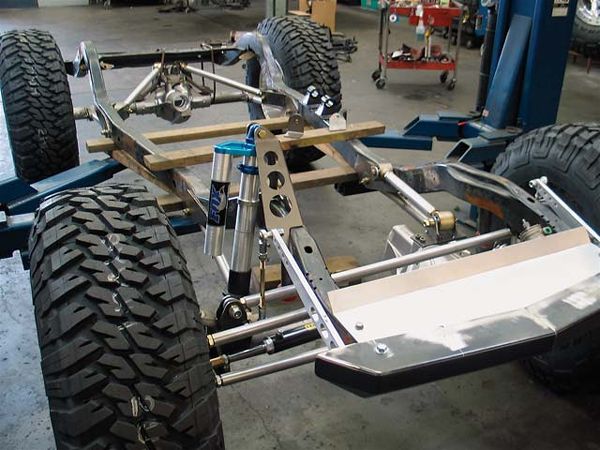
Another issue with coilovers is cost. On average, a coilover with a set of two coil springs is between $400 and $550 per corner, which equates to around $2,000 just for the shocks and coils. That doesn't even address the link materials needed to locate the axles, the brackets for mounting the shocks, the fabrication required to make everything work, and getting someone qualified to help choose the perfect valving and coils for your vehicle. However, when you start to look at the performance of the suspension, you can realize why it is so expensive. Where a leaf-sprung suspension has friction, noise, and inconsistent performance to deal with, coils give you adjustability, little to no axlewrap, and a smooth ride over harsh terrain.
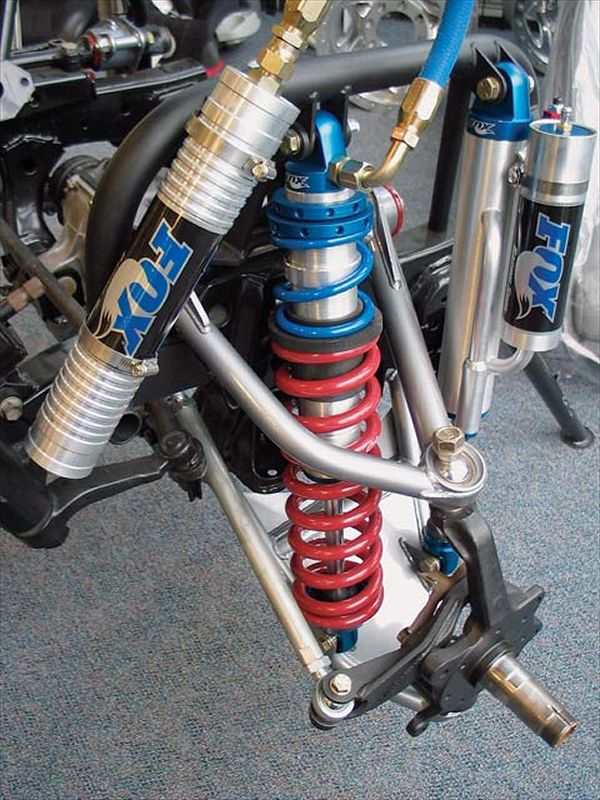
There are many suspension kits out there that come with a coilover that is already valved and outfitted with springs for that specific vehicle. Most of the time a high-grade bolt-on kit, such as the new FabTech or Skyjacker Ford Super Duty kit, the Black Diamond/Superlift XCL for Jeeps, and the Donahoe Racing, Sway-A-way, Bilstein, or Total Chaos kits for Toyotas, is sufficient for normal-to-aggressive wheeling and still lets the vehicle work as a great daily driver.

In addition, there are suspension kits to allow swapping in a coilover shock to a previous suspension kit to gain the adjustability it allows. Examples include the Poly Performance and Currie brackets to add a coilover to a Jeep TJ. These kits and brackets do not come with a specific coilover, but leave that choice up to you.
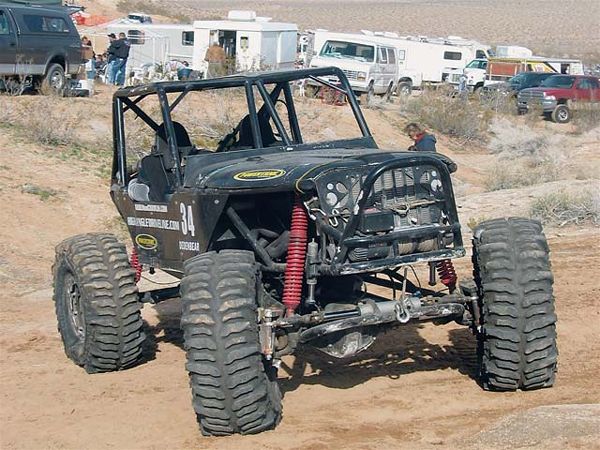
To sum it all up, coilovers offer more adjustability in ride height, ride quality, spring rates, and shock valving than other suspensions. You need to have a good working link suspension to locate the axle, but this can also give better approach and departure angles as well as getting rid of any axlewrap issues. Finally, the tighter packaging of the coilover can allow for better fitment in small vehicles, but choosing the correct coilover for you is something that you should consult with a deal or shock manufacturer on. Though they are not cheap, a properly tuned and installed coilover can help bridge the gap between your current farm truck, a flexible rockcrawler, and that desert-bombing trophy truck you dream of.